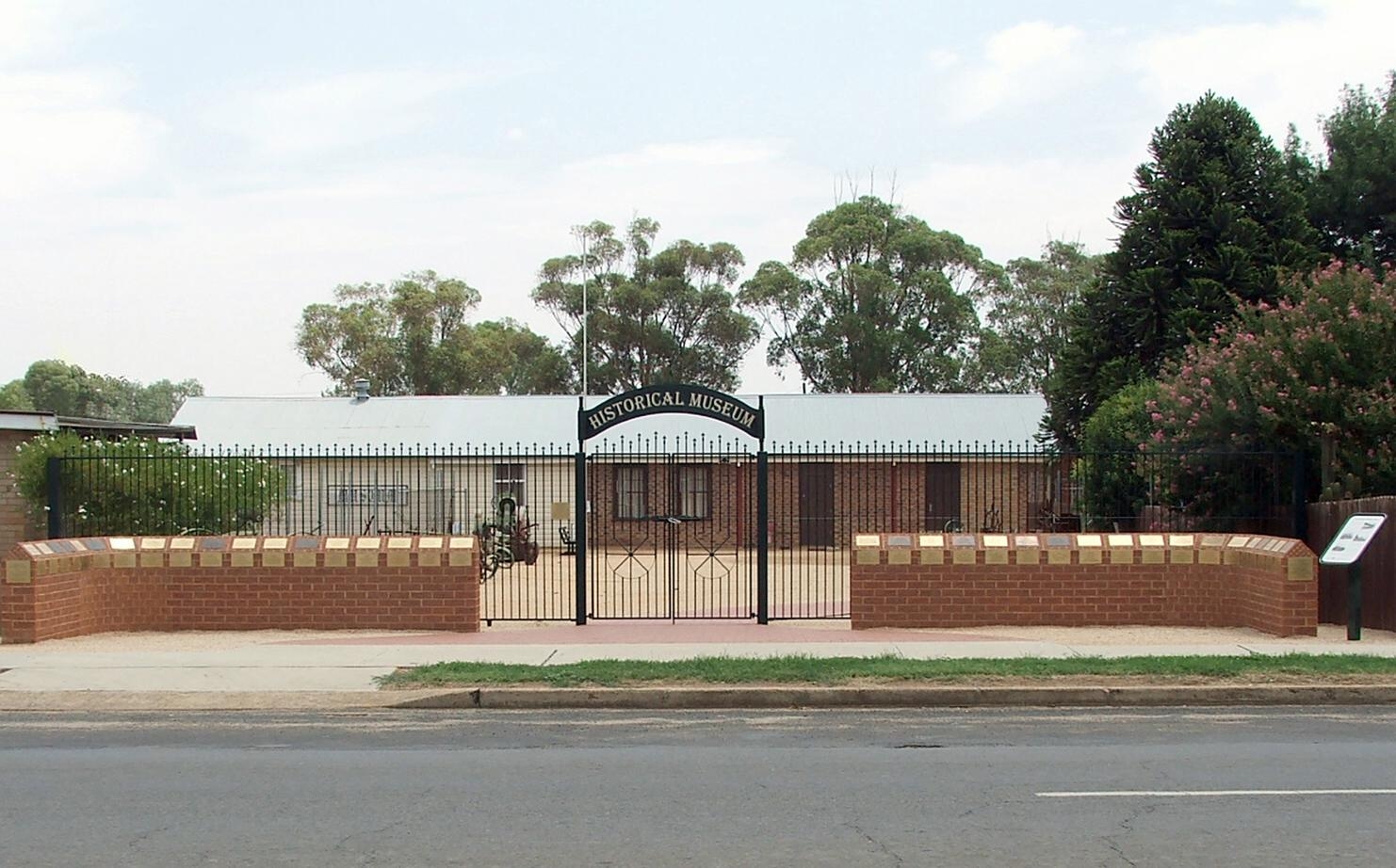Merle’s Little Black-out Curtain Dress
Make Do and World War Two
This empire waist dress, which has a cross-over bodice and matching bolero jacket, was made from a former blackout curtain used during WWII. After ‘Victory in the Pacific’ was declared in August 1945, the curtain was salvaged by Merle Hadley (1926-2015) from her childhood home in Sydney. The dress was machine-sewn by Merle in 1956, when she and her husband Jim lived in Forbes following his appointment to the town’s branch of the Rural Bank of NSW.
During the war, faced with the threat of Japanese sea and air raids, Australian homes were commonly equipped with ‘black-out’ curtains to reduce their visibility at night. Merle was a wartime bride, and Jim (1920-2016), was a returned soldier.
A decade after the war ended Merle, who had taught herself to sew, hatched the idea to re-purpose the curtain into a dress and jacket to wear to local social events. Dinners, balls and fundraisers held in country towns during these years, were often occasions where townspeople ‘got dressed-up’.
During and immediately after the war, in line with Australian Rationing Regulations, clothing was sparingly distributed to all citizens, and this was enforced using coupons. The austerity of this time meant women were encouraged to ‘make, mend and do’. This involved fashioning new garments at home and extending the life of old ones, as well as recycling, or what is now referred to as up-cycling, items such as curtains.
Making do was one of many new habits the war encouraged or required, and Merle’s dress is a moving reminder of the impact wartime had on the home-front, which was widespread and long-lasting.
To commence a new appointment with the Rural Bank, Merle moved with her husband to Canowindra in 1968. At Canowindra, Merle became enthusiastically involved with the Canowindra Historical Museum. In 2015 Merle donated the dress and jacket to the Museum.
That Merle kept the dress all these years demonstrates the influence wartime had on her. For the rest of us it makes Merle’s wartime experience visible and tangible.






